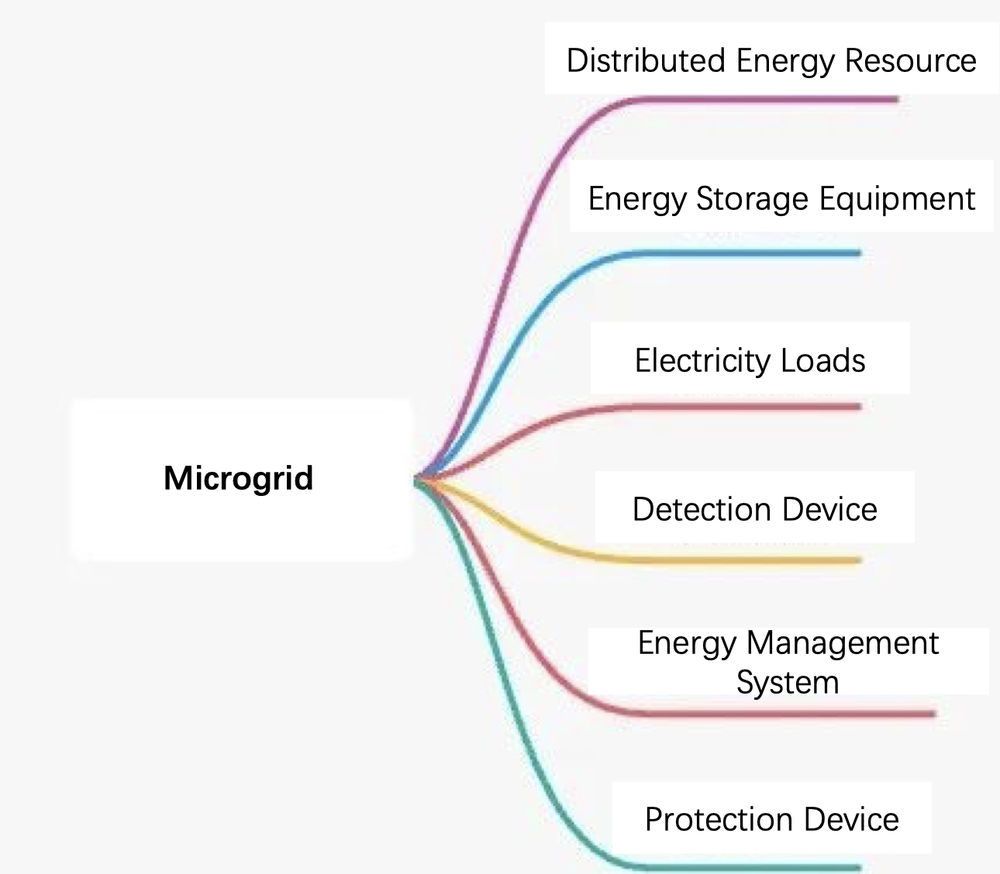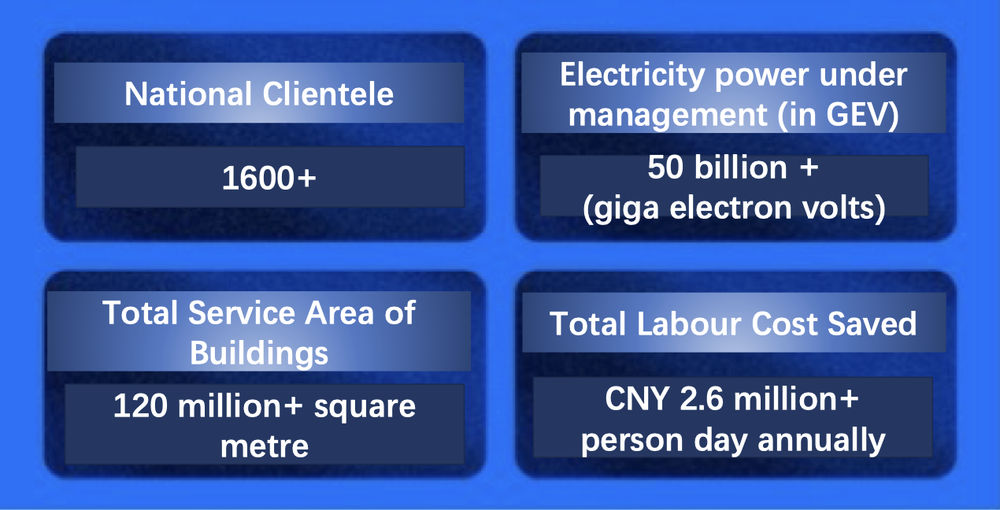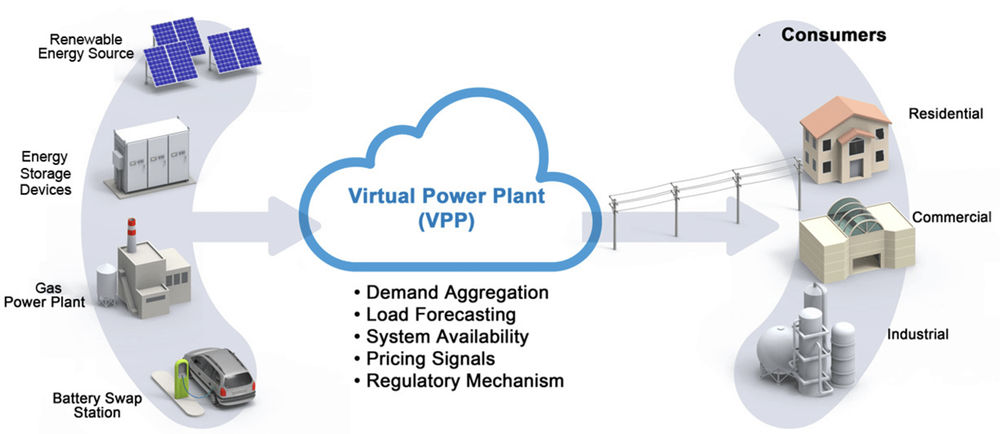- The “14th Five-Year Plan” issued in 2022 specifically pointed out the development of microgrids and smart microgrids to achieve the dual-carbon goal
- Microgrids are moving towards “Source-network-load-storage”, a new type of power operation mode
- Compared with microgrids, virtual power plants have a larger scale of operation and can be scheduled across regions. Virtual power plants can integrate various players to participate in power transactions and operations
On 1 March 1 2021, the State Grid of China announced the “Carbon Peaking and Carbon Neutrality” action plan [1]. The plan includes accelerating the construction of a smart grid, increasing clean energy transmission, supporting the development of distributed energy resources and microgrids, and building a clean energy optimal allocation platform.
A microgrid is a small power generation and distribution system composed of distributed energy resources, energy storage equipment, electricity loads and energy management systems. It enables autonomous systems that are self-controlled, protected and managed, either in connection with external grids or in isolation. A microgrid solves the problem of distributed power supply integration, improves the power grid’s clean energy capacity and is energy-saving, convenient and reliable.

Currently, the local microgrids mainly adopt a connected model of operation. A dependable and secure regional intelligent energy management system is established through the interconnection of distributed sources of energy, energy storage, power electronic devices and other equipment. Compared with the traditional large power grid, the microgrid has the following characteristics:

The development of microgrids is significant for its economic and environmental benefits, energy diversity, peak regulation, safety and reliability:
- Distributed energy can use the waste heat generated by power generation for heating and cooling, so energy can be used in a rational cascade, improving energy utilisation efficiency by up to 70 to 90%.
- Distributed power sources reduce or slow down the construction of large power plants and high-voltage transmission networks, which saves investment. They can use various energy sources, such as natural gas, hydrogen, wind and solar energy, and provide users with multiple energy application methods, such as cooling, heating, and electricity. Therefore, it is an effective way to solve the energy crisis, improve energy efficiency, ensure energy security and promote environmental protection.
- Summer and winter are often the peak load periods. A gas turbine-based tri-generation system using natural gas can provide cooling in summer and heating in winter while balancing natural gas supply and demand. This system can complement both natural gas and electricity.
- When there is a large-scale power outage in the power grid, the distributed power generation system with a special design can still maintain normal operation, improving the safety and reliability of the power supply.
Distributed energy is a cost-effective, safe and flexible way to develop energy. The “14th Five-Year Plan” provided guidelines for the modern energy system, which specified the transition from large networks to microgrids, as well as the development of smart microgrids [2]. Microgrids consist of distributed power generation, which is an important component. The size, level and stability of distributed power generation operation directly affect the microgrid’s operation. Microgrids’ profitability is further enhanced if distributed power generation can continue to reduce costs and achieve higher efficiency.
Distributed energy technology is undoubtedly an important development direction of future world energy technology. In recent years, the overall newly added installed capacity of distributed energy in the world has been increasing. According to a report on development mode and investment trends of China’s distributed energy industry [3], the global cumulative installed capacity of distributed energy is 758.9 GW, and the newly added installed capacity is 100.2 GW as of 2022.
The investment in distributed energy from 2016 to 2022 has increased significantly. In 2022, the global investment in distributed energy was about US$100.9 billion. The Asia-Pacific region, represented by China, is currently the world’s largest market for distributed energy investment. The higher the energy utilisation rate and the better the environmental protection of a country, the more it will promote the application of distributed energy technology.
Microgrids are moving towards an integrated operation mode of “source-network-load-storage”, coordinating the supply and demand of distributed energy
In January 2019, the State Grid Corporation of China proposed the strategic goal of developing smart grids [4]. Pilot projects have been implemented to promote microgrids mainly composed of distributed new energy and new forms of energy storage.
Taking Shanghai as an example, in 2022, Shanghai Development and Reform Commission issued the “Implementation Plan for Promoting Pilot Projects of Carbon Peak and Carbon Neutrality in Key Areas and Parks in Shanghai” [5], which specified low-carbon and zero-carbon energy to be used. It specifically pointed out the development of microgrids in the form of distributed new energy and new forms of energy storage, as well as the pilot operation mode of “source-network-load-storage” integration.
Source-network-load-storage is a new type of power operation mode, which includes power sources, power grids, loads and energy storage. Power sources include various new types of energy, and loads (storage) include households, industry, commerce, energy storage and microgrid systems. This integrated microgrid can self-control, monitor and protect, and manage energy, achieve power balance, system optimisation, fault detection, quality protection and low-carbon emission reduction, and is a complete set of new energy systems [6].
In the past, the power grid system regulation mainly adopted the “source-following-load” mode. When the electricity demand suddenly increases, once the power generation capacity on the power supply side is insufficient, supply and demand imbalance will occur, heavily affecting the power grid’s safe operation. “Source-network-load-storage” can promote precise matching of supply and demand on both sides, maximise the use of clean energy, effectively solve the problems of clean energy consumption and the resulting power grid volatility, and improve the overall efficiency of the power system [7].

AI optimises grid operation, and IoT empowers Smart Energy management systems
Currently, the application scenario of microgrids lies mainly in three areas: public facilities, industrial and commercial parks, and local communities. The geographic distribution is wide-ranged and dispersed with numerous quantities, which increases the demand for remote monitoring and maintenance of equipment.
The most advanced distributed energy network operates by adopting intelligent monitoring, networked group control and remote control technology to achieve on-site unmanned operations. It also relies on a next-generation energy social service system mainly composed of energy service companies for professional operation and management to ensure safety and reliable service.
Under the influence of AI, IoT, Cloud Computing and many new technologies, microgrids can use technological capabilities to create an intelligent energy system for diagnosis, control, transportation and use. The mature, intelligent microgrid system consists of distributed photovoltaic power generation systems, energy storage systems, operation and maintenance management systems, and power transmission systems. With the support of the intelligent energy management platform, it serves the energy supply, operation, maintenance, as well as value-added services for the entire electricity consumption area. An intelligent microgrid can achieve functions such as:
- Remote Power Meter Reading: Monitor and analyse data, with warnings for abnormal information.
- Intelligent Remote Operation and Maintenance: Use wireless communication, edge computing and big data analysis to improve operation and maintenance efficiency and reduce fault losses.
- Safety Electricity Use Management: Collect real-time data on electrical circuits and equipment, including temperature, overload, overvoltage, undervoltage and leakage. Provide timely warnings and maintenance to ensure the safety of personnel and property and provide safety analysis reports.
As an energy Internet operator, Tianjin Anjie IoT Technology (Anjie) [8] provides customers with management platforms that cover energy and equipment management, which reduces carbon emissions by nearly one million tons annually and energy operation costs by 50%. Additionally, it saves energy costs by 20% and saves investment in new projects by 20%, which significantly improves energy efficiency. Moreover, Anjie can realise higher energy security management efficiency and lower energy costs for customers through a series of plans such as energy planning, energy use, safety control and energy management.

As electric power trading becomes more prevalent in the new energy field, energy management systems are transitioning from power management to transaction management. Power prediction accuracy and trading capability are now crucial. Energy management systems must also quickly identify system failures and conduct detailed simulation tests to ensure safe and stable operation. As the domestic carbon trading market is gradually improving, with national initiatives of resuming Chinese Certified Emission Reductions (CCER) [9], it is foreseeable that the future of energy management systems is moving towards an energy-carbon collaborative management platform. Mechanisms, including green electricity, certifications and carbon transactions, will be introduced and established to expand profit channels and clean energy usage.
Virtual power plants vs Microgrids: Differences and future trends
Japan is widely recognised as a pioneer when it comes to combining economic development, resource consumption and environmental protection. However, the Fukushima nuclear accident exposed the vulnerability of large-scale centralised power supply. Therefore, Japan has decided to build a new generation of power generation systems and comprehensive energy management to transform into small-scale distributed energy systems represented by renewable energy and energy storage. However, dynamically optimising the combination of distributed power sources while maintaining a real-time balance of supply and demand is a significant challenge. Under the influence of the energy internet, demand response (DR) and virtual power plants (VPP) have become popular in the Japanese electricity market. They reduce basic and peak loads, make up for power supply shortages due to the closure of nuclear power plants, complement multi-energy integration, reduce peak regulation demand of thermal power, improve renewable energy utilisation and optimise grid configuration for different power source outputs, which ultimately promotes grid intelligence.

In terms of composition architecture, operation logic, core technology and low-carbon operation, VPPs are significantly different from microgrids. VPPs are not essentially power plants but are load-side users who have undergone Smart Energy control transformation. They can be commercial buildings or factory production lines. The intelligent terminals loaded on buildings and factories can monitor power demand online, auto-adjust power load and achieve coordinated control of distributed resources.
In the case of a commercial building, when the grid issues a load reduction instruction, the intelligent terminals can flexibly adjust the operation mode of air conditioning, elevators, energy storage and tri-cogeneration units, which reduces the power load without affecting the user experience. In such a way, the building transforms into a “power plant” that delivers electricity to the grid.
There are several participants included in VPP: power generation companies, government agencies, electricity trading centres, grid companies (dispatch centres), energy users, integrated service providers, etc [10]. Compared with microgrids, VPPs have a larger scale of operation and can be scheduled across regions. In short, VPPs can integrate various resources to participate in the transactions and operations, improve the economy and reliability of the power system, and promote the efficiency of renewable energy to achieve better low-carbon operations.
In the future, VPP will have a more extensive application through market mechanisms that integrate various participants, including government, grid enterprises and users.
References
- [1] State Grid Corporation of China
- [2] The 14th Five-Year Plan
- [3] “Analysis of the Development Mode and Investment Trend of China’s Distributed Energy Industry from 2023 to 2029”, released by Zhiyan Consulting
- [4] National Energy Administration
- [5] Development and Reform Commission, Municipal of Shanghai
- [6] State Grid Actively Explores a New Model of Power, Demand and Response
- [7] New Energy Report Series – Investment Report of Smart Grid, released by Tianfeng Securities Research Institute







